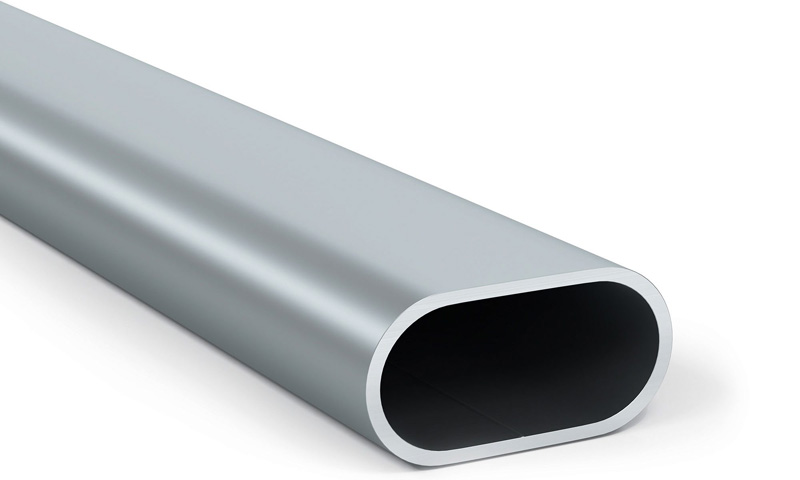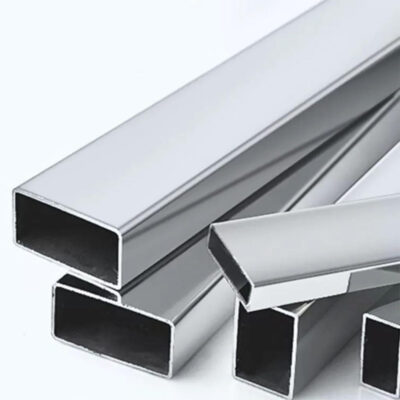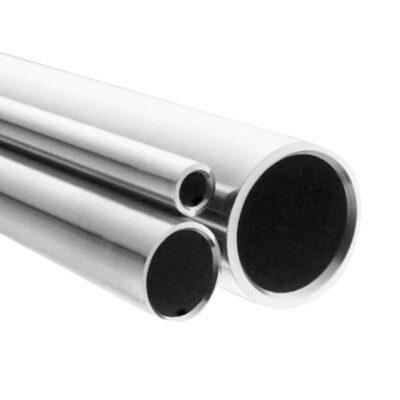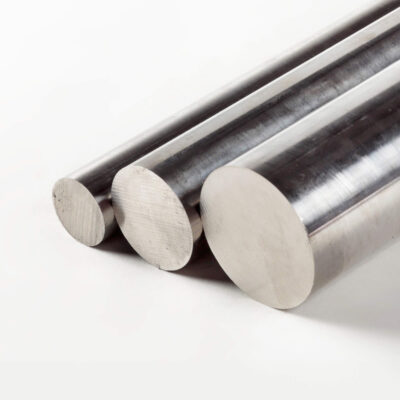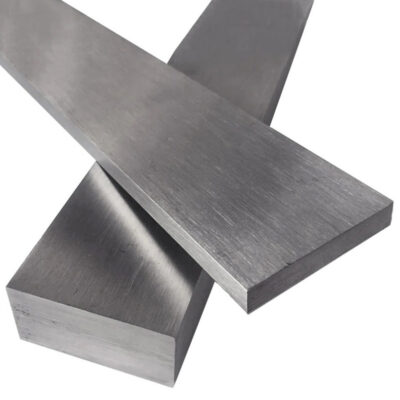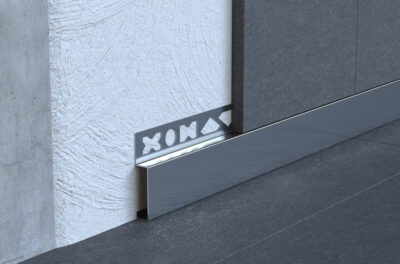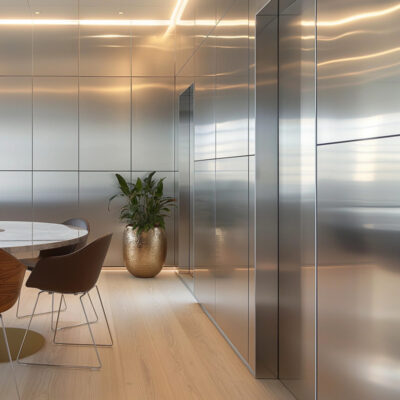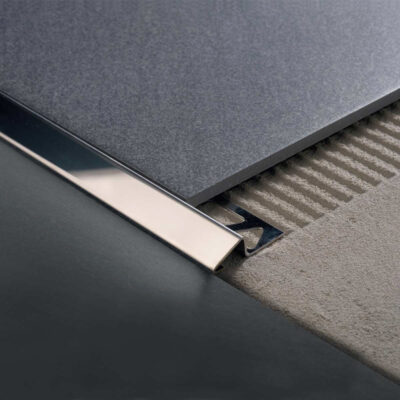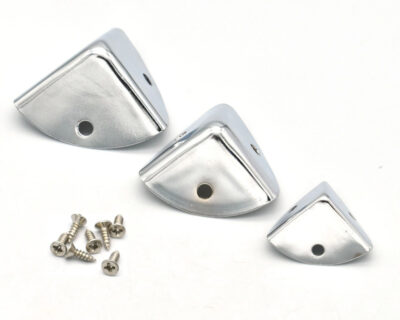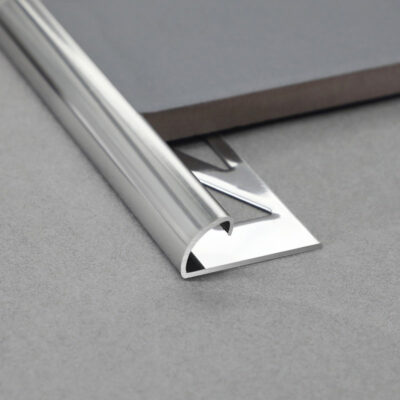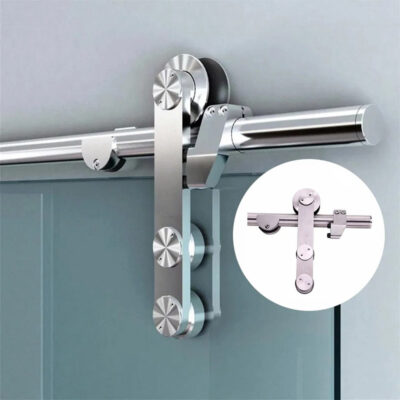The Evolution and Significance of Oval Stainless Steel Tubes
The industrial landscape changed dramatically when stainless steel first entered the manufacturing scene in the early 20th century. What started as a revolutionary material has evolved into countless specialized forms, with oval stainless steel tubes representing one of the most versatile yet underappreciated variants. These uniquely shaped tubes emerged from the need to combine the exceptional properties of stainless steel with the practical benefits of non-circular profiles.
I recently toured a manufacturing facility where they’ve been producing various tubing profiles for over 50 years. The production manager pointed to their oval tube line and remarked, “Twenty years ago, these were a specialty item we’d run maybe once a quarter. Now they’re in constant production.” This shift reflects the growing recognition of oval tubing’s distinct advantages across multiple industries.
Unlike their circular counterparts, oval stainless steel tubes offer a different set of mechanical and aesthetic properties that make them particularly suitable for specific applications. Their development wasn’t merely a design choice but a response to engineering challenges that circular tubes couldn’t adequately address. The unique oval profile creates a cross-sectional shape that provides directional strength characteristics while maintaining many of the benefits of tubular design.
The market for these specialized tubes has expanded significantly over the past decade. According to industry data, the demand for oval stainless tubes has grown at approximately 7.5% annually since 2015, outpacing the growth of standard round tubing. This acceleration stems from innovations in manufacturing processes that have made oval profiles more economical to produce while maintaining tight tolerances and excellent surface finishes.
Specialized manufacturers like E-Sang have been at the forefront of this evolution, developing advanced production techniques that ensure consistent quality while expanding the range of available dimensions and material grades. The contemporary oval stainless steel tube bears little resemblance to early versions, with today’s products offering considerably improved performance characteristics and manufacturing precision.
Technical Specifications and Manufacturing Processes
When examining oval stainless steel tubes, understanding the technical specifications becomes crucial for proper application. These tubes are defined by several key measurements, including the major axis (the longest dimension across the oval), the minor axis (the shortest dimension), and the wall thickness. Standard sizes typically range from 10mm × 5mm to 150mm × 75mm for the outer dimensions, with wall thicknesses varying from 0.5mm to 5mm depending on the application requirements.
Manufacturing these specialized profiles involves several sophisticated processes. The most common method begins with flat stainless steel strip that undergoes continuous roll-forming to create a round tube, which is then precision-formed into an oval shape before welding. The alternative method involves starting with a round tube that is subsequently deformed into an oval profile through a specialized drawing process.
Dr. Elena Kowalski, a metallurgical engineer I consulted for this article, explained: “The challenge with producing high-quality oval stainless tubes lies in maintaining uniform wall thickness throughout the deformation process. The tensile properties of the material must be carefully controlled to prevent thinning at the flatter sections of the oval.”
This manufacturing complexity is reflected in the table below, which outlines the primary production methods and their characteristics:
| Manufacturing Method | Wall Thickness Uniformity | Surface Finish Quality | Production Speed | Cost Efficiency | Typical Applications |
|---|---|---|---|---|---|
| Roll-Form and Weld | Good (±2%) | Excellent, with weld seam | High | Very good | Architectural, furniture, general industrial |
| Draw-Forming from Round | Excellent (±1%) | Superior, seamless | Low | Moderate | High-pressure applications, precision equipment |
| Direct Extrusion | Variable (±3-5%) | Good, seamless | Medium | Good for large volumes | Structural applications, heat exchangers |
| Laser Welding | Very good (±1.5%) | Excellent, minimal weld appearance | Medium-high | Good for thin walls | Decorative applications, consumer products |
The material composition represents another critical aspect of oval stainless steel tubes. The most commonly used grades include:
- 304/304L: Offering excellent corrosion resistance and formability, suitable for most general applications
- 316/316L: Providing superior corrosion resistance particularly against chlorides, ideal for marine or chemical processing environments
- 321: Stabilized against intergranular corrosion, appropriate for high-temperature applications
- 430: A ferritic grade offering good corrosion resistance at lower cost, used in less demanding environments
Surface finishes for oval stainless tubes range from mill finish (relatively rough) to highly polished mirror finishes (Ra < 0.1μm). The appropriate finish depends largely on the application, with food processing and pharmaceutical industries typically requiring smoother surfaces to prevent bacterial adhesion and facilitate cleaning.
During production, quality control measures include rigorous dimensional checking, hydrostatic testing for welded tubes, and various non-destructive testing methods to ensure structural integrity. Ultrasonic testing has become increasingly common for detecting internal defects that might compromise performance in critical applications.
Advantages of Oval Stainless Steel Tubes in Industrial Applications
The asymmetrical profile of oval stainless steel tubes creates a distinct set of advantages that make them preferable to round tubes in numerous applications. I’ve watched engineers deliberate over tubing profiles for days before ultimately selecting oval sections for their unique combination of properties.
From a structural perspective, oval tubes offer directional strength characteristics that can be strategically aligned with anticipated loads. When properly oriented, they provide superior resistance to bending in one direction while maintaining reasonable flexibility in the perpendicular plane. This property makes them particularly valuable in applications where loads are predominantly unidirectional but some degree of flexibility is desired in the secondary axis.
The relationship between cross-sectional shape and mechanical properties becomes evident when comparing load-bearing capacities:
| Property | Oval Tube | Round Tube (Equal Perimeter) | Round Tube (Equal Cross-Section) |
|---|---|---|---|
| Weight per Meter | Base reference | 5-8% heavier | Equal |
| Bending Resistance (Major Axis) | High | Moderate (25-35% less) | Moderate (20-30% less) |
| Bending Resistance (Minor Axis) | Lower | Same as major axis | Same as major axis |
| Torsional Rigidity | Moderate | High (15-25% greater) | High (15-20% greater) |
| Space Efficiency (in rectangular spaces) | Excellent | Poor | Poor |
| Material Cost | Base reference | 5-8% higher | Equal |
Beyond mechanical considerations, hydraulic efficiency represents another significant advantage. When fluids flow through tubes, oval profiles can reduce pressure drop compared to circular tubes of equivalent cross-sectional area. This occurs because the oval shape provides a more favorable surface-to-volume ratio that minimizes friction losses, particularly in laminar flow conditions.
Structural engineer Thomas Wei notes: “When designing support structures with space constraints, I often specify oval stainless tubes because they provide the necessary strength in the primary load direction while minimizing projection into occupied spaces. This can be critical in applications like handrails where user comfort depends on having an appropriate gripping surface without excessive protrusion.”
The aesthetic qualities of oval tubes have made them increasingly popular in architectural and design applications. Their sleek, elongated profile creates visual interest while maintaining clean lines that complement modern design aesthetics. This has led to their widespread adoption in high-end furniture, retail fixtures, and architectural elements where appearance matters as much as function.
From a practical standpoint, the space efficiency of oval tubing can’t be overstated. When installed against flat surfaces or in rectangular channels, they minimize wasted space while providing ample internal capacity. This characteristic has made them particularly valuable in confined installations where maximizing internal flow area within limited dimensional envelopes becomes critical.
The combination of these advantages has driven adoption across diverse fields, though it’s worth acknowledging that oval tubes typically command a 10-15% price premium over equivalent round tubes due to more complex manufacturing requirements. This cost difference continues to narrow as production volumes increase and manufacturing techniques improve.
Specialized Applications Across Industries
The versatility of oval stainless steel tubes has led to their adoption across a surprisingly diverse range of industries. Each sector leverages different aspects of these specialized profiles to solve specific challenges.
In the automotive industry, oval stainless tubes have found numerous applications in both structural and fluid-handling systems. Exhaust components frequently utilize oval tubing because it provides necessary flow capacity while fitting within the limited undercarriage space. The flattened profile allows for greater ground clearance compared to round tubes of equivalent cross-sectional area. Additionally, oval sections are increasingly used in structural elements where they offer directional stiffness aligned with primary load paths while reducing weight.
A senior automotive engineer at a major manufacturer told me, “We’ve been systematically replacing round tubular members with oval profiles in our chassis designs. The weight savings might seem incremental—typically 5-7% per component—but those reductions compound across the vehicle to deliver meaningful efficiency improvements.”
The architecture and construction sectors have embraced oval stainless tubes for both functional and aesthetic reasons. Structurally, they serve as elegant handrails, balustrades, and light structural supports. The oval shape provides a comfortable gripping surface for handrails while the stainless composition delivers corrosion resistance and minimal maintenance requirements. In rainwater management systems, oval downspouts offer greater capacity than round pipes of similar projection from the wall, while presenting a more streamlined appearance.
Food processing and pharmaceutical industries utilize oval stainless tubing primarily for sanitary process piping. The rounded internal contours eliminate corners where product might accumulate, while the external shape allows for easier cleaning compared to angular profiles. The reduced horizontal surfaces on oval tubes minimize dust collection, an important consideration in cleanroom environments. These industries typically specify high-polish finishes (often electropolished) to further enhance cleanability and reduce product adhesion.
The specific advantages of oval tubes in sanitary applications become clear when examining their performance characteristics:
| Consideration | Oval Stainless Tubes | Round Stainless Tubes | Rectangular Stainless Tubes |
|---|---|---|---|
| Surface Area for Bacterial Growth | Low | Lowest | High |
| Ease of External Cleaning | Very good | Good | Moderate |
| Product Flow Characteristics | Excellent with minimal dead zones | Excellent | Poor (corner dead zones) |
| CIP (Clean-in-Place) Effectiveness | Very good | Excellent | Moderate |
| Drainability | Excellent when properly oriented | Good | Poor |
| Installation Compactness | Superior in space-constrained areas | Moderate | Good but with sharp edges |
In furniture design and architectural interiors, oval stainless tubes provide both structural integrity and visual appeal. The modern aesthetic of stainless steel combined with the softer lines of oval profiles creates a distinctive look that designers increasingly favor for high-end commercial spaces. Beyond appearance, the smooth profile eliminates sharp edges found on rectangular tubing, enhancing safety in public spaces.
Even the renewable energy sector has found applications for these specialized tubes. Solar thermal systems often utilize oval stainless tubes for fluid circulation where they provide better contact with flat collector plates compared to round tubes. This improved thermal contact enhances heat transfer efficiency while maintaining the corrosion resistance necessary for long-term outdoor exposure.
Marine applications represent another growing market, with oval stainless railings and structural elements becoming common in yacht construction and waterfront installations. The 316L grade typically specified for these applications provides excellent resistance to chloride environments while the oval profile offers improved aerodynamics and reduced wind loading compared to flat or square sections.
Selection Criteria and Sizing Considerations
Choosing the appropriate oval stainless steel tube requires balancing multiple factors beyond simply matching dimensions to space constraints. The selection process should begin with a thorough analysis of the application requirements, including mechanical loads, environmental conditions, aesthetic considerations, and budget limitations.
When determining the appropriate size, engineers typically start by calculating the required cross-sectional area based on flow requirements (for fluid applications) or structural analysis (for load-bearing applications). Once the necessary area is established, the oval dimensions can be selected to fit within spatial constraints while providing optimal performance.
During a recent renovation project, I encountered a situation where replacing conventional round handrails with oval sections solved multiple problems simultaneously. The narrower profile reduced projection into a confined corridor while the wider gripping surface improved accessibility compliance. This seemingly small change eliminated the need for costly structural modifications while enhancing both functionality and appearance.
For structural applications, the orientation of oval tubing becomes critically important. The moment of inertia differs significantly between the major and minor axes, meaning resistance to bending varies depending on load direction. Proper alignment with anticipated forces can maximize strength while minimizing material usage and weight.
The table below outlines key selection parameters and their relative importance across different application types:
| Selection Parameter | Structural Applications | Fluid Transport | Aesthetic/Architectural | Food/Pharma Applications |
|---|---|---|---|---|
| Major/Minor Axis Dimensions | Critical | Important | Very Important | Important |
| Wall Thickness | Critical | Important | Less Important | Important |
| Material Grade | Important | Critical | Moderate | Critical |
| Surface Finish | Less Important | Important | Critical | Critical |
| End Connection Compatibility | Moderate | Critical | Less Important | Critical |
| Weight Considerations | Important | Less Important | Moderate | Less Important |
| Corrosion Resistance Requirements | Application-dependent | Very Important | Important | Critical |
Common sizing mistakes often stem from focusing exclusively on the major axis dimension while neglecting the important relationship between the major and minor axes. Industry expert Maria Chen points out: “I frequently see designers simply specify an oval tube by its widest dimension, without considering that the ratio between major and minor axes significantly impacts both performance and appearance. Standard ratios typically range from 1.5:1 to 2.5:1, with each having distinct characteristics.”
Cost considerations inevitably influence selection decisions. While oval stainless tubes generally carry a premium over round profiles, this difference must be evaluated against the total installation cost including fittings, supports, and labor. In many cases, the space efficiency and reduced material usage of oval sections can offset their higher unit cost, particularly in large-scale installations.
Compatibility with standard fittings presents another important consideration. The specialized nature of oval tubing means that off-the-shelf connections are less common than for round tubes. This limitation often necessitates custom fabrication of transitions, particularly for fluid-handling systems. Planning for these connection details early in the design process can prevent costly modifications later.
Surface finish selection deserves careful attention, as it affects both appearance and functionality. For architectural applications, consistent visual quality typically requires specifying drawn finishes rather than rolled and welded tubes. In contrast, structural applications can often utilize less expensive finishes without compromising performance.
When selecting oval tubing for load-bearing applications, it’s advisable to consult published engineering data rather than attempting theoretical calculations. The complex interaction of dimensions, material properties, and loading conditions makes empirical data particularly valuable for these specialized profiles.
Installation and Fabrication Techniques
Working with oval stainless steel tubes presents distinct challenges compared to conventional round profiles. These differences influence everything from cutting and bending to welding and finishing operations. Understanding these nuances helps ensure successful implementation while avoiding costly fabrication mistakes.
Cutting oval tubing requires special attention to prevent deformation. The asymmetrical cross-section tends to collapse under clamping pressure from conventional pipe cutting tools. I’ve seen instances where improperly secured oval tubes severely distorted during cutting operations, rendering expensive material unusable. To prevent this, fabricators typically use specialized fixtures that support the tube’s shape or employ techniques like band sawing with minimal clamping pressure.
The varying wall thickness that naturally occurs in bent oval tubes creates particular challenges. When bent across the minor axis (the easier direction), the inside radius experiences significant compression while the outside radius stretches. This stress distribution can cause more pronounced thinning on the outer radius compared to round tubes of similar dimensions. Conversely, bending across the major axis requires substantially more force and may necessitate internal mandrels to prevent collapse.
Welding considerations become particularly important when joining oval stainless steel components. The varying distance from the centerline to the tube wall creates changing heat dissipation patterns that can lead to distortion if not properly managed. Experienced fabricators often use intermittent tack welding followed by a balanced welding sequence to minimize warping.
An experienced fabricator shared this insight: “The key to successful oval tube welding is recognizing that heat input needs to be adjusted as you move around the perimeter. The tighter radius portions dissipate heat differently than the flatter sections. We typically reduce amperage slightly when welding along the flatter portions to maintain consistent penetration without excessive heat input.”
Surface finishing after fabrication requires careful attention, particularly for visible architectural applications. The varying curvature of oval profiles makes achieving consistent finish quality more challenging than with round tubes. Automated finishing equipment often needs custom adaptation to maintain uniform pressure and contact across the oval surface. For highly polished requirements, progressive finishing with increasingly fine abrasives typically yields better results than attempting to achieve the final finish in fewer stages.
The table below summarizes key fabrication considerations and recommended techniques for different operations:
| Fabrication Operation | Challenges with Oval Tubes | Recommended Techniques | Special Tooling Requirements |
|---|---|---|---|
| Cutting | Deformation under clamping pressure | Band saw with minimal clamping; plasma cutting with specialized fixtures | Custom support fixtures; low-pressure clamping systems |
| Bending (Minor Axis) | Wall thinning at outer radius; potential wrinkling at inner radius | Larger bend radius than equivalent round tube; mandrel support for tight radii | Oval-specific bend dies; specialized mandrels |
| Bending (Major Axis) | High resistance to bending; tendency to flatten | Significantly larger bend radius; rotary draw bending with strong pressure die | Heavy-duty bending equipment; custom pressure dies |
| Welding | Variable heat dissipation; distortion tendency | Balanced welding sequence; intermittent tacking; heat sinking when possible | Standard TIG equipment with skilled technique |
| End Forming | Maintaining oval shape during forming operations | Custom tooling designed for specific oval dimensions | Application-specific forming dies |
| Surface Finishing | Inconsistent pressure application on varying curvature | Multi-stage progressive finishing; specialized holders for consistent orientation | Custom sanding fixtures; adapted polishing wheels |
Connection methods for oval stainless tubes often require custom solutions due to the limited availability of standardized fittings. Fabricators frequently employ techniques like direct welding, custom-machined flanges, or transition pieces that convert from oval to standard round connections. Each approach involves trade-offs between cost, appearance, and structural integrity.
For installations that may require future disassembly, designers sometimes specify custom clamp systems or specially fabricated mechanical joints. These solutions typically cost more initially but offer significant advantages for maintenance access or potential reconfiguration.
Throughout the fabrication process, dimensional verification becomes particularly important for oval profiles. The potential for distortion during various operations necessitates more frequent checking than typically required for round tubes. Modern fabrication shops increasingly employ 3D scanning technology to verify complex oval components against design specifications, particularly for precision applications.
Maintenance and Longevity Factors
The long-term performance of oval stainless steel tubes depends significantly on both their initial specification and ongoing maintenance practices. With proper care, these components can deliver decades of reliable service even in challenging environments, but several factors influence their actual service life.
Corrosion resistance represents the primary advantage of stainless steel in most applications, but this property isn’t absolute. Different grades offer varying levels of protection against specific corrosive conditions. For standard indoor applications, 304-grade stainless typically provides adequate protection, while outdoor or marine environments generally require the enhanced corrosion resistance of 316-grade material with its additional molybdenum content.
During my inspection of a 15-year-old installation at a coastal property, I noticed a striking contrast between different sections of oval handrailing. Components fabricated from 316L stainless remained virtually pristine despite constant salt spray exposure, while several replacement sections made from lower-grade material showed significant surface pitting and discoloration after just three years in service. This stark difference highlighted the critical importance of proper material selection for the specific environment.
Regular cleaning plays a crucial role in maintaining both appearance and corrosion resistance. The cleaning frequency and methods depend largely on the environmental conditions and finish type. For architectural applications with polished finishes, fingerprints and surface contaminants can quickly detract from appearance, necessitating more frequent cleaning than industrial installations where functional performance takes precedence over aesthetics.
The table below outlines recommended maintenance practices for different environments:
| Environment | Recommended Cleaning Frequency | Cleaning Method | Inspection Focus | Expected Service Life with Proper Maintenance |
|---|---|---|---|---|
| Indoor (Standard Environment) | 3-6 months | Mild soap solution with soft cloth; non-abrasive stainless cleaner for stubborn spots | Surface contaminants; unexpected discoloration | 30+ years |
| Indoor (Chlorinated/Pool Area) | 1-3 months | Specialized chloride-neutralizing cleaner; thorough rinsing | Pitting corrosion, particularly at welds; salt crystal formation | 15-25 years depending on proximity to water |
| Outdoor (Urban) | 2-4 months | Mild detergent cleaning; occasional polishing for decorative finishes | Atmospheric staining; particulate build-up in crevices | 25-30 years |
| Outdoor (Coastal) | Monthly | Salt-neutralizing cleaner; freshwater rinsing | Pitting corrosion; crevice corrosion at connections | 20+ years with 316L grade |
| Industrial/Chemical | Application-specific (often monthly) | Chemical-specific neutralizing agents; avoidance of chloride-containing cleaners | Stress corrosion cracking; chemical attack at specific exposure points | Highly variable based on specific exposures |
Common failure modes for oval stainless steel tubes include localized corrosion, mechanical damage, and in rare cases, material fatigue. Crevice corrosion often occurs at joints or connections where moisture can become trapped against the surface. This risk highlights the importance of proper joint design that either seals completely against moisture intrusion or allows for complete drainage and drying.
Mechanical damage typically results from impact or abrasion that penetrates the passive oxide layer that gives stainless steel its corrosion resistance. When this occurs, localized corrosion can develop even on high-quality material. Prompt attention to damaged areas through cleaning and potentially re-passivation can prevent this progression.
Professor Sarah Johnson, a corrosion specialist I consulted, explained: “The most important maintenance aspect for stainless components isn’t necessarily frequency but rather consistency. Even high-grade stainless will eventually develop issues if subjected to extended periods without appropriate cleaning, particularly in challenging environments.”
For installations in especially aggressive environments, periodic professional inspection can identify early signs of potential problems before they develop into significant issues. These inspections typically focus on weld areas, connections, and locations where different materials meet, as these represent the most common initiation points for corrosion.
Remediation of existing corrosion depends on its severity and type. Surface staining often responds well to specialized stainless steel cleaners, while more developed pitting might require mechanical removal followed by chemical passivation to restore the protective oxide layer. In severe cases, component replacement represents the only reliable solution.
The end-of-life considerations for stainless steel components offer another advantage: their high recycling value. The valuable alloy content makes stainless steel tubes worth recovering even after decades of service, supporting sustainability goals while potentially offsetting some replacement costs.
Future Trends in Oval Stainless Steel Tube Applications
The evolution of oval stainless steel tubing continues as manufacturers develop enhanced production techniques and designers discover new applications. Several emerging trends point toward expanded utilization of these specialized profiles in coming years.
Advancements in manufacturing technology are enabling tighter tolerances and more consistent wall thickness distribution than previously possible. Computer-controlled forming and drawing operations now produce oval tubes with dimensional variation under ±0.05mm in some cases, opening new possibilities for precision applications. This improved consistency has particular relevance for automated assembly processes where component variation can create significant challenges.
Material science developments have introduced new stainless steel formulations with specialized properties. Duplex stainless grades, which combine aspects of both austenitic and ferritic structures, offer enhanced strength and corrosion resistance compared to conventional 300-series stainless steels. These properties make them increasingly attractive for structural oval tubes in demanding environments, potentially reducing required wall thickness and overall weight.
The architectural sector continues to expand applications for oval stainless profiles, particularly in sustainable building designs where their combination of strength, minimal maintenance requirements, and recyclability aligns with green building principles. The emerging trend toward biophilic design—incorporating natural elements and organic shapes into built environments—has further increased interest in the flowing lines that oval tubing provides.
In transportation applications, lightweighting initiatives drive continued exploration of oval profiles as replacements for heavier structural elements. The aerospace industry has begun adopting specialized oval stainless components in non-critical applications where their weight advantage over round tubes of equivalent strength provides meaningful efficiency benefits. Similar adoption continues in automotive applications, particularly for electric vehicles where weight reduction directly impacts range capabilities.
Advanced computational modeling has improved designers’ ability to optimize oval tube dimensions for specific loading conditions. Rather than selecting from standard size catalogs, engineers increasingly specify custom oval profiles with dimensions precisely calculated for their particular application. This optimization frequently yields material savings of 10-15% compared to using standard sizes, more than offsetting the additional cost of custom production for larger projects.
The medical device industry has embraced oval stainless tubes for applications ranging from surgical instruments to patient-handling equipment. The ergonomic advantages of oval gripping surfaces combined with the hygienic properties of stainless steel make these components particularly suitable for healthcare environments. Recent innovations include antimicrobial surface treatments that enhance the inherent cleanability of stainless steel with active microbial suppression.
Looking forward, the integration of oval stainless components with other advanced materials presents interesting possibilities. Hybrid systems combining the corrosion resistance of stainless oval tubes with the weight advantages of composite materials have shown promise in prototypes for marine and aerospace applications. These combinations potentially offer “best of both worlds” solutions for particularly demanding applications.
The future also holds challenges, particularly in raw material availability and cost stability. The alloy elements that give stainless steel its valuable properties—primarily nickel and chromium—face potential supply constraints as demand increases across multiple industries. This situation has prompted research into alternative formulations that maintain essential performance characteristics while reducing dependency on potentially limited resources.
Despite these challenges, the fundamental advantages of oval stainless steel tubes ensure their continued relevance across diverse applications. Their unique combination of directional strength, aesthetic appeal, and inherent durability addresses specific needs that alternative profiles cannot easily match. As manufacturing capabilities continue advancing, these specialized components will likely find even wider application in both existing and emerging industries.
Frequently Asked Questions about Oval Stainless Steel Tubes
Q: What are Oval Stainless Steel Tubes, and how do they differ from round tubes?
A: Oval Stainless Steel Tubes are specialized pipes designed to optimize space usage while maintaining the strength and durability associated with stainless steel. Unlike round tubes, oval tubes have a flattened or elliptical cross-section, making them ideal for applications where space is limited. This unique shape offers better maneuverability in tight spaces and adds aesthetic appeal to architectural and decorative designs.
Q: What are the primary benefits of using Oval Stainless Steel Tubes?
A: The benefits of Oval Stainless Steel Tubes include:
- Aesthetic Appeal: They offer a sleek, visually appealing design, making them suitable for decorative elements.
- Space Efficiency: Their oval shape allows for better fitment in tight spaces.
- Durability and Corrosion Resistance: Made from materials like 316L stainless steel, they are highly resistant to corrosion and durable in harsh environments.
- Ease of Installation: The oval shape can enhance installation ease in complex systems.
Q: In which industries are Oval Stainless Steel Tubes commonly used?
A: Oval Stainless Steel Tubes are widely used across several industries, including:
- Automotive: For exhaust systems and structural components.
- Aerospace: For parts requiring high-temperature strength and corrosion resistance.
- Marine: For shipbuilding and offshore platforms due to their seawater corrosion resistance.
- Construction and Architecture: For handrails, fencing, and decorative elements.
Q: How are Oval Stainless Steel Tubes manufactured?
A: The manufacturing process involves selecting high-quality raw materials, such as hot extruded seamless pipes or welded coils. Seamless tubes are cold reduced to achieve the desired shape, while welded tubes undergo processes like cutting, forming, and sealing. Both types undergo surface treatments and heat treatments to ensure strength and durability.
Q: What maintenance and installation considerations should I keep in mind when using Oval Stainless Steel Tubes?
A: Maintenance and installation considerations include ensuring a smooth finish and precise tolerances during manufacturing. During installation, factors such as fitting tight spaces, securing tubes properly, and possibly using specialized joiners for seamless connections should be considered. Additionally, maintaining cleanliness is crucial to preserve their corrosion resistance properties.

